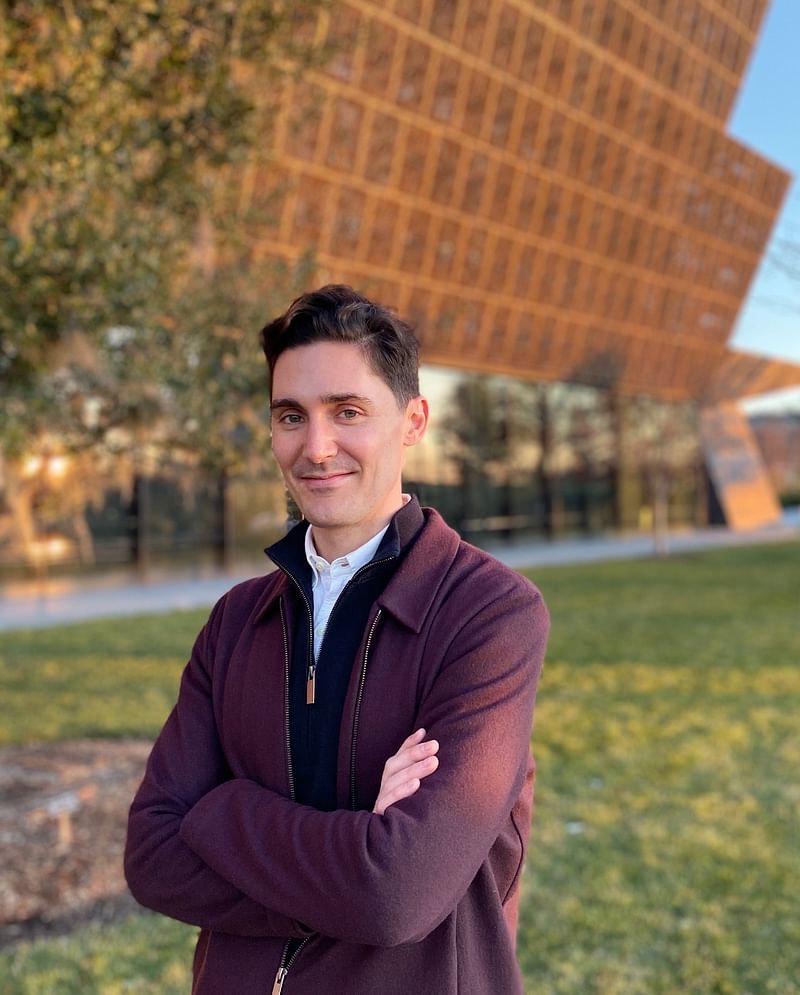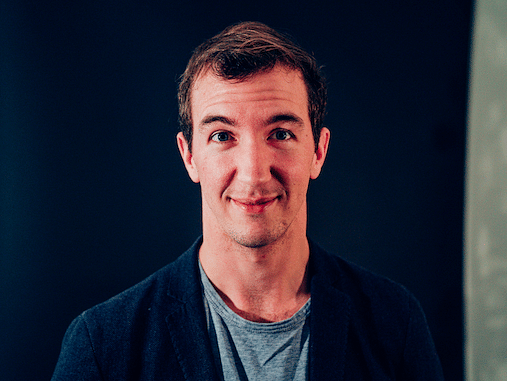Harvard GSD announces the six 2020 Richard Rogers Fellows
By Justine Testado|
Friday, Jan 10, 2020

Related
The fourth cycle of the Harvard GSD Richard Rogers Fellowship has come to a close. Today, the school announced the six 2020 fellows, who will take on a three-and-a-half-month residency at the iconic Wimbledon House in London, which architect Richard Rogers designed for his parents in the late '60s. Launched in 2016, the yearly fellowship is inspired by Rogers' commitment to cross-disciplinary research and engagement in his practice.
The six fellows were chosen from over 150 applicants from around the world. In addition to the residency, each fellow will receive travel expenses in London and $10,000. Two fellows at a time will reside in the Wimbledon House in the spring, summer, and fall. Their research topics range from the historical to the speculative — like examining the allocation of parking around new buildings in London, or the civic imaginaries that can potentially be drawn from existing building codes.
Read more about each of the fellows and their research proposals below.
SPRING 2020 Fellows

Emma Letizia Jones (Zurich, Switzerland)
Proposal: “Built by the Book”
Emma Letizia Jones is an Australian-born architectural historian and writer. She was educated at the University of Sydney and the Architectural Association, London, and obtained her PhD in 2016 from the University of Zurich with the thesis Schinkel in Perspective, a new account of the drawing practice of the Prussian architect Karl Friedrich Schinkel. She has also been a design studio director at the EPF Lausanne. Alongside developing her PhD thesis for publication, Jones teaches the history and theory of architecture (1450-1850) at the GTA Institute, ETH Zurich, in the Chair of Prof. Maarten Delbeke, and is a founding member of TEN, winners of the Swiss Art Awards for architecture in 2018. Her current research is focused on the translations occurring between architecture and its drawn and printed representations with a focus on early-19th-century Britain and Germany; and the relationship between books and buildings in architectural culture. Her writing has appeared in numerous publications and she has organized exhibitions and teaching workshops in Switzerland, Italy, the UK, and Australia.
Jones’s proposal “Built by the Book: The Global Impact of the Building Manual and Trade Catalogue in Nineteenth Century” London is a study of the global dissemination of the English “building manual” and the “trade catalogue”: new types of architectural books which emerged in mid-nineteenth-century London as both a response to, and driver of, the rapid speculative development of the city’s housing stock. The research conducted while staying at the Wimbledon House will look critically at a selection of these commercial publications currently held at the Victoria and Albert Museum National Art Library and a group of other London-based archives, to understand how they emerged from a long line of books about building and ornamentation stretching back to at least the 16th century, while also investigating how they continue to inform the development of housing policy and the standardization of housing, both new and old, across London. This study is part of a wider research project supported by the Swiss National Science Foundation and the University of Technology Sydney.

Timothy Ivison (Los Angeles, CA)
Proposal: “Counter Constructs”
Timothy Ivison is a writer and researcher living in Los Angeles. His work is concerned with the history and political ecology of cities, with a recent focus on post-war redevelopment in London and Los Angeles. He has taught a number of interdisciplinary seminars on biopolitics, crowd theory, and urban history, most recently at the Southern California Institute of Architecture (SCI-Arc) and Art Center College of Design. His urban research is also informed by a sustained engagement with contemporary art, artist-run spaces, and self-organized institutional practices. Ivison received a BA in Visual and Critical Studies and a BFA in studio practice from the School of the Art Institute of Chicago and completed his PhD at the London Consortium, Birkbeck College, University of London in 2017. From 2014 to 2016, he was an Andrew W. Mellon Foundation Researcher at the Canadian Centre for Architecture.
Ivison’s proposal Counter Constructs investigates the material history of a series of planning conflicts that took place within London in the late 1960s and 1970s. Focusing on the transition from post-war reconstruction to speculative redevelopment, the project points to a remarkable pattern in which communities worked with architecture students, legal advisors, ex-planners, and advocacy groups to create alternative visions of the city. Emphasizing the visual artefacts of these struggles, the project documents the production and counter-production of plans, models, and exhibitions by community groups using the visual tools of planning and architecture to challenge the redevelopment agenda and the terms of participation.
SUMMER 2020 Fellows

Michelle Chang (Cambridge, MA)
Proposal: “Reframing Urban Imaginaries”
Michelle Chang directs JaJa Co and teaches architectural design at Harvard GSD. She founded her independent practice in 2014 after working in offices in New York, Boston, and San Francisco. Her design work experiments with the overlaps between and among film, installation, music, and building. Chang holds an MArch from Harvard GSD and a BA in international relations from Johns Hopkins University. She is a former MacDowell Colony Fellow, Wortham Fellow, and a recipient of the Architectural League Prize for Young Architects + Designers. In her research, Chang studies how optics, digital media, and modes of cultural production influence translations between design and building. Before teaching at Harvard GSD, she taught at Rice University, the University of California Berkeley, California College of the Arts, and Northeastern University.
In her Richard Rogers Fellowship proposal, Chang posits that, already embedded within building codes is a civic imaginary. Professional guidelines established by governments and non-profit associations project conceptual and material potentials for the environment. She speculates that architects can more creatively engage these imagined futures by translating legal descriptions to semantic images.

Sean Canty (Cambridge, MA)
Proposal: “Before Images, After Pictures, and Somewhere In-between”
Sean Canty is a designer and Assistant Professor of Architecture at Harvard GSD, where he teaches architectural design in the school’s core design studios. Canty's teaching, research, and practice explore unexpected forms of visuality, motivated by architectural type and geometry. Exploring the interrelationships between interior, envelope, and building, Canty explores montage as a spatial practice. Canty is also one of the founding principals of Office III (OIII), an experimental architectural collective based in New York, San Francisco, and Cambridge. Office III was selected in November 2016 as a finalist for the Young Architects Program at MoMA PS1. Before establishing these two respective practices, Canty was a Project Designer at IwamotoScott Architecture in San Francisco, during which he led projects including the Pinterest headquarters, Bloomberg TechHub, the Goto House, Noe Valley House, and HeavyBit Industries. He received an MArch from Harvard GSD and a BArch from California College of the Arts.
Canty’s proposal, “Before Images, After Pictures, and Somewhere In-between”, is a speculative exploration in revisiting the 18th-century English Picturesque tradition. In revisiting this aesthetic discourse, the research aims to tease out the spatial, perceptual, and representational techniques for application in contemporary practice. The development of the research will happen through the construction of a visual catalog of picturesque strategies developed through written, visual, and formal analysis by surveying critical picturesque landscapes through the lens of three themes: the fragment, view constructions, and filtered forms.
FALL 2020 Fellows

Thomas Shay Hill (Somerville, MA)
Proposal: “Cycles of Urban Form”
Thomas Shay Hill is an urban historian and PhD candidate at Harvard GSD. Hill’s research focuses on the boom-bust cycle of urban development: a process that is at once recurrent and unpredictable. Hill is interested in the role of this process in shaping and reshaping the urban environment. He focuses in particular on the relationship between building booms and the formation of new construction techniques, architectural styles, building types, and centers of activity on the urban fabric. Hill focuses as well on the destructive implications of the construction cycle: in accelerating the obsolescence of existing buildings, typologies, and places, and in giving way to “busts” that entail vacancy, devaluation, and bankruptcy. Hill is primarily interested in the formal and spatial implications of this irregular historical process. Hill’s professional background is in planning, design, and construction in New York City. Before coming to Harvard, Hill completed a BA in Urban Studies from Columbia University.
During his residency, Hill will advance his dissertation research by studying the formal consequences of building booms on the urban fabric of London. A major focus of Hill’s research is the 1980s office development boom, a global phenomenon that witnessed the birth of Canary Wharf as an alternative commercial district to the City of London. Hill plans to access historical records on London’s urban fabric—including maps, plans, construction documents, and property records—from the London Metropolitan Archives and the National Archives at Kew.

Henry Grabar (Chicago, IL)
Proposal: “Paved Paradise”
Henry Grabar is a staff writer at Slate who writes about cities. His work has also appeared in the Atlantic, Architectural Record, the Guardian, the Wall Street Journal, and other publications, and his research on the urban landscape of Algiers after 1962 was published in the journal Cultural Geographies. In 2018, his story on immigrants in in the meatpacking town of Fremont, Nebraska was a finalist for the Livingston Award for National Reporting by a journalist under 35. He was the editor of the Future of Transportation anthology (Metropolis Books, 2019) and is writing a book about parking for Penguin Press. He has a BA from Yale in French and American Studies, and he lives in Chicago.
As Grabar observes: In the early 2000s, London stopped requiring new buildings to include parking spots. Between 2004 and 2011, the city constructed 144,000 fewer spaces than it would have under the old laws—in square footage, the equivalent of foregoing 20 Empire State Buildings worth of parking spots, not including the years since 2011. With his proposal Paved Paradise, Grabar will explore how this decision has changed the capital’s architecture, neighborhood character, housing costs, and commuting patterns, and will draw on London's experience to project what might be in store for the dozens of cities now following in its footsteps.
RELATED COMPETITION Harvard GSD – 2020 Richard Rogers Fellowship

RELATED NEWS The six Richard Rogers Fellows for 2019


Share
0 Comments
Comment as :